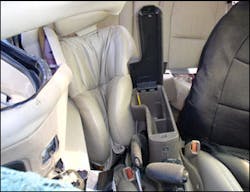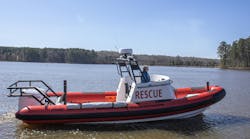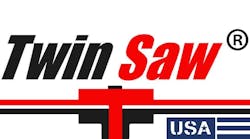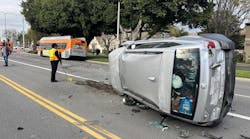For crews desiring compliance with NFPA 1670, Standard for Technical Rescue Training, Chapter 6-2.2a, a vehicle crash scene size-up should include the following.
Topic:Side Impact Collision Size-Up
It is important that rescue personnel be competent in conducting an accurate and efficient scene size-up upon arrival at a vehicle incident. For crews desiring compliance with NFPA 1670, Standard for Technical Rescue Training, Chapter 6-2.2a, a vehicle crash scene size-up should include;
- Scope and magnitude of the incident
- Risk/Benefit analysis (body recovery versus rescue)
- Number/size of vehicles and/or machines affected
- Integrity and stability of vehicles and/or machines affected
- Number of known/potential victims
- Access to the scene
- Hazards such as disrupted or exposed utilities, standing or flowing water, mechanical, hazardous materials, electrical, and explosives
- Exposure to traffic
- Environmental factors
- Available/necessary resources
This Crash Course lesson uses the NFPA 1670 size-up points as they address one specific vehicle crash; a Saturn 2-door coupe into a pole. Review of the images provided will function to stimulate a "what if" discussion regarding each NFPA size-up factor and how they apply to this collision.
Scope and Magnitude of the Incident
Using the NFPA 1670 Standard as a guide, this Crash Course will review the NFPA size-up considerations that an Operations-level vehicle rescue responder should have mastery of. The first NFPA size-up point is the 'scope and magnitude of the incident'. Scope relates to the "size" of the incident; one vehicle in this case. Magnitude relates to the ability of the responders to handle the situation before them. This is a one-vehicle collision into a fixed object; a pole in this circumstance. Fire department, EMS, rescue, law enforcement, and a tow/recovery vehicle should be sufficient. Potentially a medical helicopter could also be utilized.
Risk/Benefit Analysis (Body Recovery Versus Rescue)
In this situation, the hit is to the passenger's front door. A seated front seat passenger would be in grave danger of serious or fatal injuries. This patient would be your 'recovery' operation. The rear seat occupants and the driver, if seated and belted, would most likely be alive at the time you arrive and would be your 'rescue' operation.
Number/Size of Vehicles and/or Machines Affected
This is a one vehicle collision. A typical arrival report might go like this, "Engine 5 is out, Main Street and Market Street, I have a one vehicle collision, major damage into a pole. Engine 5 is establishing Main Street Command."
Integrity and stability of vehicles and/or machines affected
This is an important consideration. The Saturn that essentially 'ate' this pole would probably be easy to stabilize. There should not be a problem accessing and shutting down the battery; it's under the hood.
Number of Known/Potential Victims
The rescue officer must work to determine the number of known or potential victims. Being a 2-door coupe, you would not expect more than 5 occupants to realistically be inside the car. As we all know however, there could be one victim or a dozen. Expect the unexpected. Be sure to check around the area and beneath the car to see if anyone was ejected or struck as a pedestrian.
Access to the Scene
Too many times rescuers try to gain access to trapped patients at the point of impact. This is where the vehicle is most crushed and least open and accessible. With this Saturn, there is good access along the driver's side door, left windows, the rear window, and actually even the passenger's rear window area. At least it should be possible to quickly make patient contact with any trapped occupants as soon as it it safe to do so.
Hazards Such as Disrupted or Exposed Utilities, Standing or Flowing Water, Mechanical, Hazardous Materials, Electrical, and Explosives
This is where the alert officer will quickly determine if it is safe to even be around the crash scene. With downed wires or a broken pole, the risk may be too great. A rescue officer would be wise to look up at any wires and cross arms attached to the pole that the car crashed into. You want to determine the integrity and degree of damage to the pole early in your incident size-up. A broken or dangling pole or loose wires contacting the car can make a radical difference in how this situation is handled. Summon utility company assistance as soon as you realize that there is a need.
Exposure to Traffic
Always one of our first safety considerations, safe parking of apparatus in a 'block' position begins to establish a safe temporary traffic control zone. The ambulance must position within this protected area. Many departments now respond two major apparatus to vehicle-related calls with the second unit primarily being charged with blocking of approaching traffic and advance warning.
Environmental Factors
The rescue scene size-up should take the 'environment' into consideration. Is this a daylight response; a night-time crash? It it extremely hot weather or is it a cold winter day? These are all environmental factors that influence how the incident scene is handled.
Available/Necessary Resources
The rescue officer should anticipate that stabilization is needed, that there may be jammed doors to be opened, that the crew may have to complete a total roof removal, and that the dash and firewall may have to be moved off a front seat occupant. The officer should make sure that there are sufficient tools and trained personnel to accomplish all of these potential tasks. Have enough personnel available to provide relief if this turns out to be a time-consuming extrication under tough weather conditions.
Crash Course Teaching Point: Study the size-up points listed in NFPA Standard 1670. They are a good starting point for training in vehicle rescue response and command operations.
- Scope and magnitude of the incident
- Risk/Benefit analysis (body recovery versus rescue)
- Number/size of vehicles and/or machines affected
- Integrity and stability of vehicles and/or machines affected
- Number of known/potential victims
- Access to the scene
- Hazards such as disrupted or exposed utilities, standing or flowing water, mechanical, hazardous materials, electrical, and explosives
- Exposure to traffic
- Environmental factors
- Available/necessary resources
Be Informed...Be Ready...Beware!






